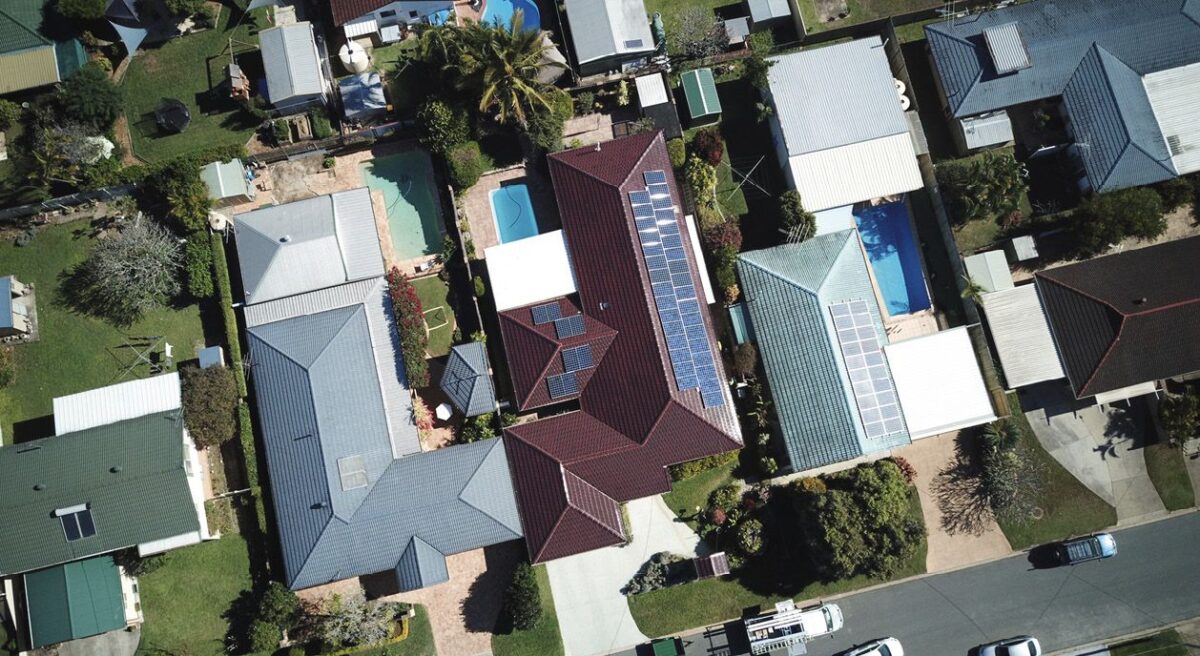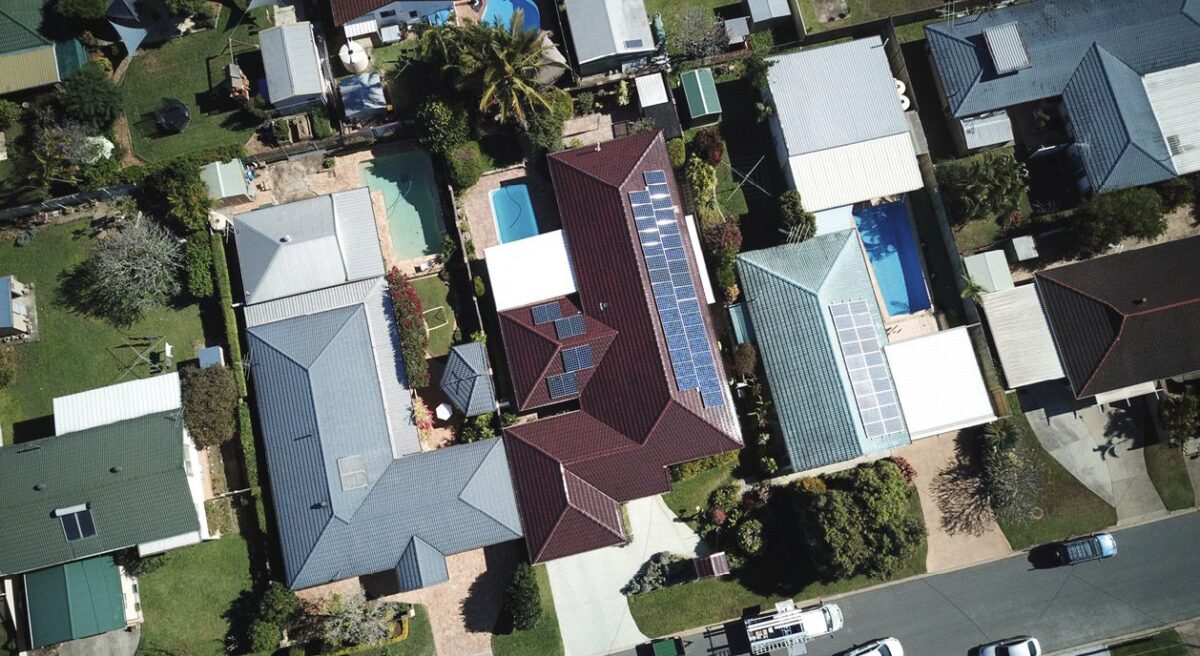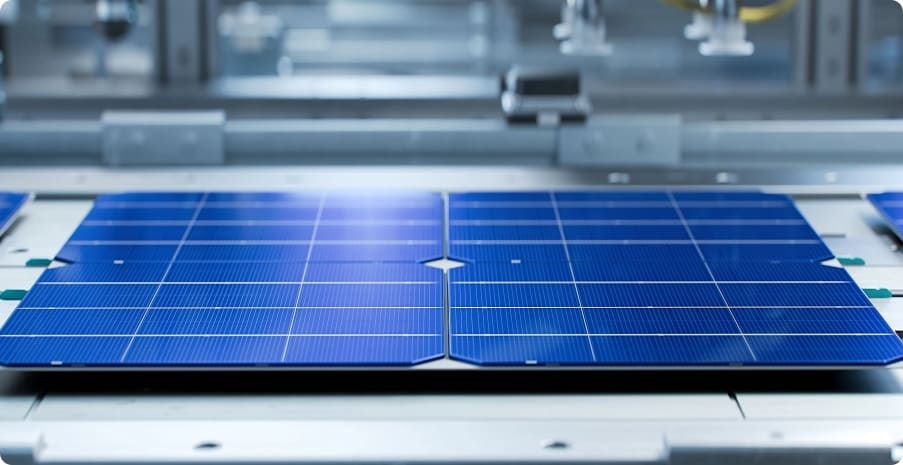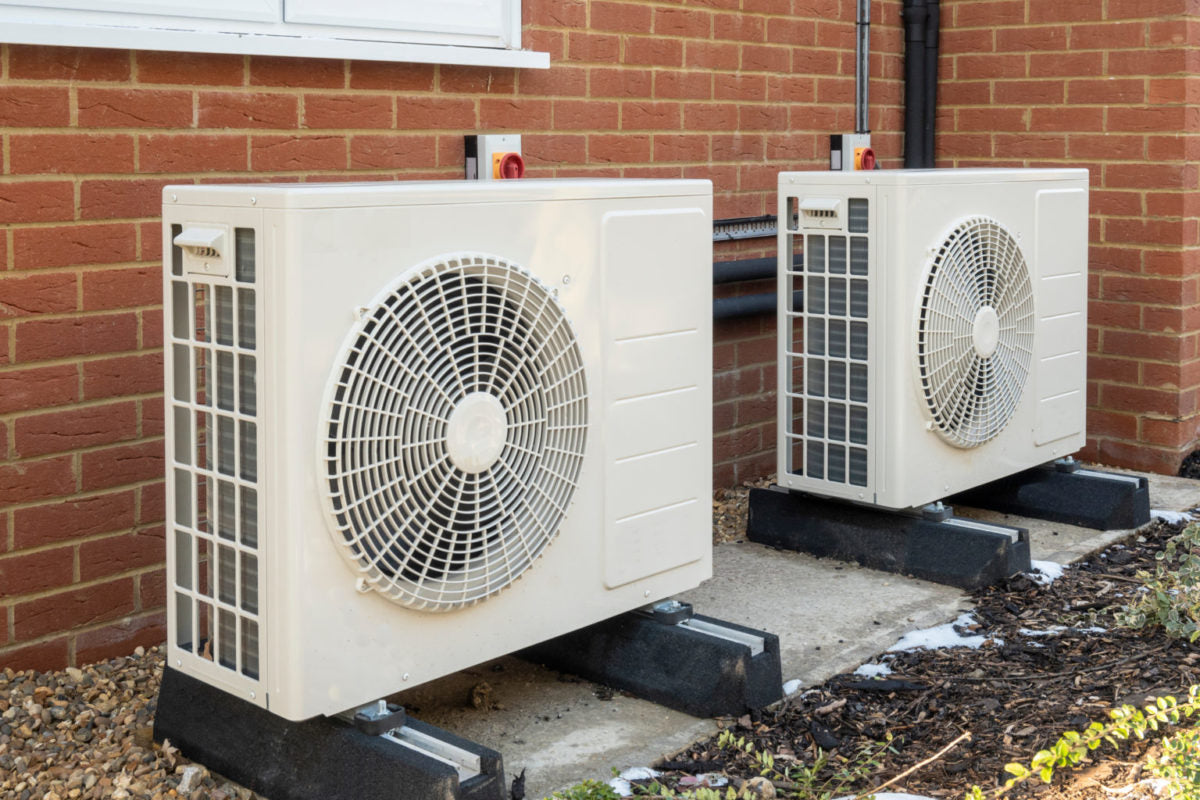https://www.pv-magazine-australia.com/2023/06/10/weekend-read-australias-electric-dreams/
Australia’s electric dreams

Some Australian suburbs are looking to “electrify everything” by building on a foundation of large amounts of residential rooftop PV.
Photo: Springers Solar
From pv magazine ISSUE 06/23
It was always there – in the promise of this sunny nation’s burgeoning rooftop solar market – that Australia would electrify stoves, water heaters, cars … everything. Now, however, Saul Griffith, a new, persuasive climate evangelist fresh from contributing to energy transition-boosting US legislation, has come home to focus on electrification – with a bid to garner government funding for all-electric pilot communities.
“While solar powered electrification is the future, this hasn’t been clear to many households and communities,” Griffith tells pv magazine Australia.
Griffith argues that electrification offers multiple benefits. It provides households with affordable electricity via locally generated solar power, reduces transmission expense, and empowers people to contribute to reducing Australia’s CO2 emissions. It also creates local jobs and keeps energy spending in the community while fostering community cohesion.
Electrification model
An engineer and inventor, Griffith moved from Australia to the US when he was 20. He completed his studies and, after successfully applying to the US government for funding to map the energy flow of the US economy in 2016, his passion for electrification was ignited.
In 2020, Griffith, fellow entrepreneur Alex Laskey, and Ari Matusiak, a former special assistant to Barack Obama, formed Rewiring America, a not-for-profit dedicated to “making electrification simple, measurable, and inevitable.” The lobbyists contributed to Joe Biden’s climate policy, which took form as last year’s US Inflation Reduction Act.
In Australia, Griffith wants to repeat the success to help eradicate the 42% emissions generated by household decisions. He launched Rewiring Australia and has been speaking out, lobbying, and forming alliances with politicians.
Electrified postcodes
A climate warrior community group in Griffith’s coastal region, south of Sydney, has tapped into the actionability of Rewiring Australia. “Saul said he had all the ideas,” Kristen McDonald tells pv magazine. “But he needed a community willing to take on the challenge. That’s where we came in.” McDonald is the voice of Electrify 2515, passionate volunteers aiming to create the first 100% electric-powered postcode (2515) in the world.
Electrification of the seaside strip, which the 2021 census indicated houses 11,700 people, won’t happen overnight but it is intended to be a “lighthouse project” to help plan and incentivise the greater Australian shift, says Griffith.
McDonald acknowledges other jurisdictions have gone a long way to net zero, towards powering their communities with renewables.
Totally Renewable Yackandandah (TRY) in the state of Victoria, for example, wants resilience and a degree of energy autonomy in the face of extreme events such as climate change-exacerbated bushfires. The community, threatened three times in the past 15 years by major fires, now draws 60% of its energy from renewables, with three microgrids, a community battery, and more to come on the path to 100% clean power.
TRY President Clare Bishop says a recent federally funded feasibility study to get the region to 100% renewables indicated installing large scale community solar would be financially challenging for the town, which then considered other alternatives. “The study found that implementing a town-wide microgrid plus another, probably at least 400 more properties, with behind-the-meter solar infrastructure, some battery storage, and maybe heat pumps for businesses and residences would get us to 100%,” Bishop tells pv magazine.
Net zero communities
Uralla, a shire of some 6,000 people, sits in the middle of the New England Renewable Energy Zone, a work in progress designed by the New South Wales (NSW) government to generate 11% of the state’s energy needs. The community’s renewables ambitions are motivated by sustainability and follow a blueprint designed by Z-NET, a collaboration of institutions dedicated to providing “a simple logic for communities across Australia to establish a least-cost approach” to achieving net-zero energy emissions.
Since the start of the Z-NET Uralla campaign, in 2016, it has conducted home energy audits to help people implement energy efficiency measures and has encouraged rooftop solar. Z-NET Uralla President Carol Shantal says that a third of properties now have rooftop solar and collectively “contribute 46% of power used in the shire.”
Shantal says ZNET Uralla is now looking at how it can “accelerate all the things we’ve been doing – which have been working for people to help lower their energy costs – because times have changed and there is even more support.” She adds that zero-interest loans to help people with upfront costs would be a key move.
Pilot power
Running pilot projects in different jurisdictions nationwide will help identify and solve all kinds of challenges to electrification and powering populations with renewables.
Postcode 2515, for example, is known for its leafy coastal landscape and many residents may previously have decided not to install solar because their properties were shaded. The Electrify 2515 website agrees that an abundance of shade “means we have about 20% less solar than average NSW suburbs,” but adds, power generated from rooftops could be shared using smart infrastructure under a trial that could enable and inform the renewable energy and electrification switch for other regions.
At a recent launch for Suburb Zero ACT, in the Australian Capital Territory – also billed “Electrify Canberra” – almost 800 interested people turned up to hear a panel that included Griffith and researcher Kathryn Lucas-Healey talk about the benefits of electrification and how to achieve more lighthouse projects.
A yet-to-be-chosen ACT suburb is set to become the beacon for others that are characterised by multi-occupancy dwellings, social housing, and standalone residences. It will wrestle down how to equitably decarbonise existing housing, demonstrating full electrification and smart technology integration of complex buildings in a cold climate.
“The point of a pilot is to do something that hasn’t been done before and that means it’s hard,” says Lucas-Healey. Tackling these problems at a suburban level, “in local schools and libraries, the places that aren’t populated with energy nerds,” she adds, will ensure people “start thinking about who’s missing out.”
Electric groundswell
Momentum for electrification is building. Electrify 2515’s McDonald says the effort received three times the expected number of responses for an initial community survey, the results revealing that uncertainty and cost were the two greatest barriers to “switching” up solar infrastructure and appliances for an electric future.
“People are not sure where to go or who to trust,” says McDonald, “There’s so much information but, [as a first step,] should they change their hot water or should they change their space heater?”
Electrify 2515 is making its first great push to increase rooftop solar installation in the post code – whether people need to upgrade existing infrastructure or put up their first solar array – as the precursor to becoming Australia’s first “electric community.” It has vetted local solar installers for quality of product, customer service, and future focus. In May, it invited approved partners to an, oversubscribed Community Solar Rollout event where residents could speak with the experts about solar and electrification and about their “personal scenario,” and could get information on finance options.
Griffith was there. He’s everywhere. He and several Australian senators have taken their message to parliament. Whether or not as a direct result, the new federal government’s first full-year budget, announced in May, included $1.6 billion (USD 1.06 billion) for “energy upgrades,” including $1 billion to “turbocharge financing options for household energy upgrades,” along with other measures.
It’s a little short, though, of the $12 billion that Griffith has calculated would put Australia on the path to “accelerated electrification and [which could] generate over $300 billion in household savings by 2035.”
This content is protected by copyright and may not be reused. If you want to cooperate with us and would like to reuse some of our content, please contact: editors@pv-magazine.com.
<




